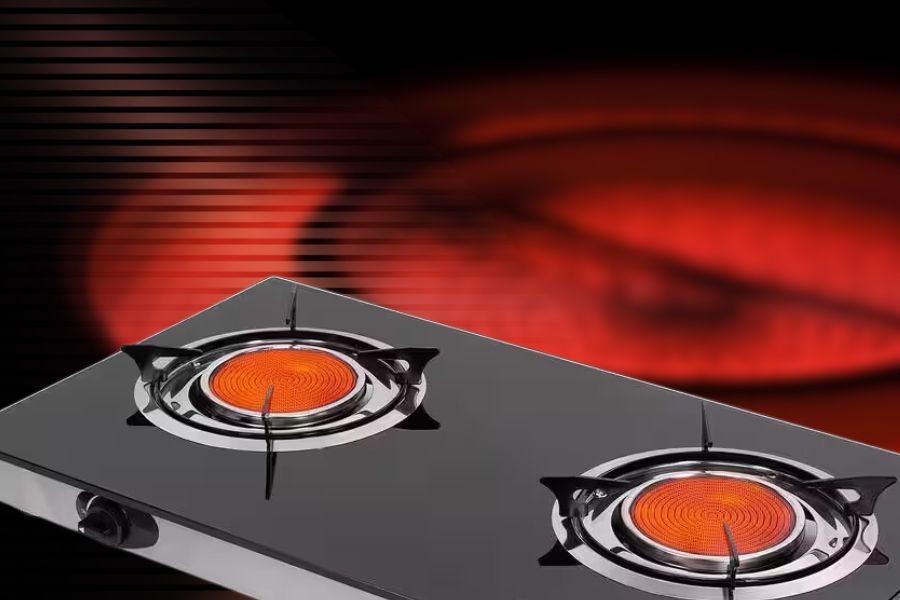Ah, the infrared gas stove—a culinary game-changer that’s captured my attention and taste buds! Imagine searing a steak to perfection, with the heat evenly distributed across the cooking surface. No more cold spots or uneven cooking! This appliance uses infrared rather than traditional gas burners, offering precise cooking temperatures and unparalleled efficiency.
What sets an infrared gas stove apart? It utilizes infrared radiation to heat your cookware, bypassing the need for an open flame. This means faster heating and less fuel consumption. The ceramic plate in the burner emits infrared energy, ensuring that your food cooks faster and more evenly. Plus, it’s a cleaner option with lower carbon monoxide emissions.
Whether you’re a home chef or a professional, the benefits of an infrared gas stove are hard to ignore. From its high BTU output to its temperature control, it’s the epitome of modern cooking equipment.
How Does an Infrared Gas Stove Work?
Infrared radiation is a type of electromagnetic radiation that is invisible to the naked eye but can be felt as heat. It is a form of radiant energy emitted by all objects with a temperature above absolute zero. Infrared radiation can be divided into three categories: near-infrared, mid-infrared, and far-infrared.
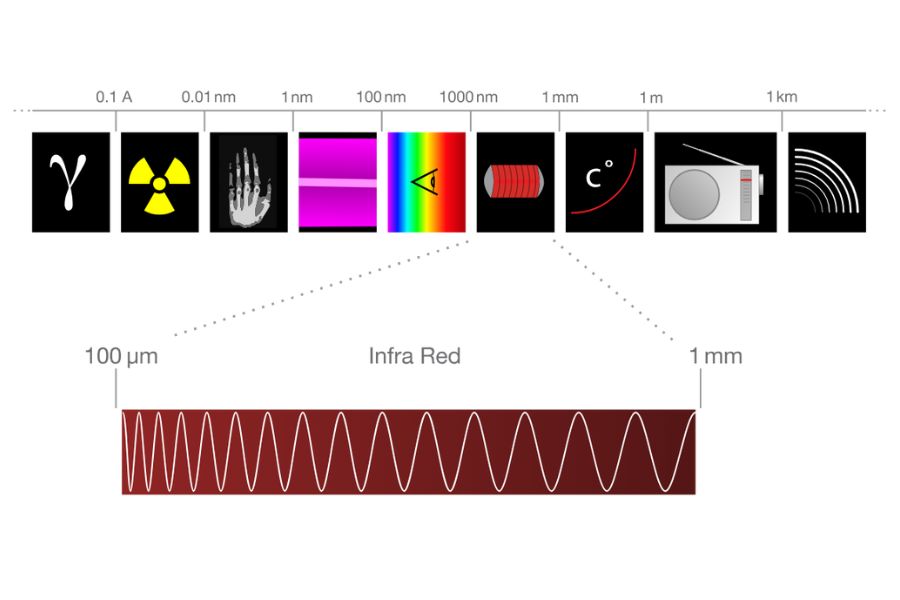
In an infrared gas stove, a burner heats a ceramic plate made of a material capable of emitting infrared radiation. This plate then emits infrared radiation towards the food on the stove’s grates.
Unlike traditional gas stoves, which heat food indirectly by heating the air around it, infrared gas stoves use infrared radiation to directly heat the food, resulting in faster and more even cooking.
One key advantage of using an infrared gas stove is that it can reach high temperatures quickly, which can be ideal for cooking certain types of food, such as steaks or chops, that require high heat.
In addition, because the heat is directed towards the food, there is less heat loss and more energy efficiency than traditional gas stoves. This means an infrared gas stove can be more cost-effective in the long run since it uses less gas to produce the same heat.
While infrared gas stoves are known for their fast cooking times and energy efficiency, there are some differences between infrared gas stoves and traditional gas stoves to keep in mind. Traditional gas stoves use flames to heat food, which can be more suitable for certain types of cooking, such as simmering or slow cooking.
On the other hand, infrared gas stoves are better for high-heat cooking, such as grilling or searing. Additionally, infrared gas stoves may require a slightly different cooking technique than traditional gas stoves since the heat is more direct and intense.
Benefits of an Infrared Gas Stove
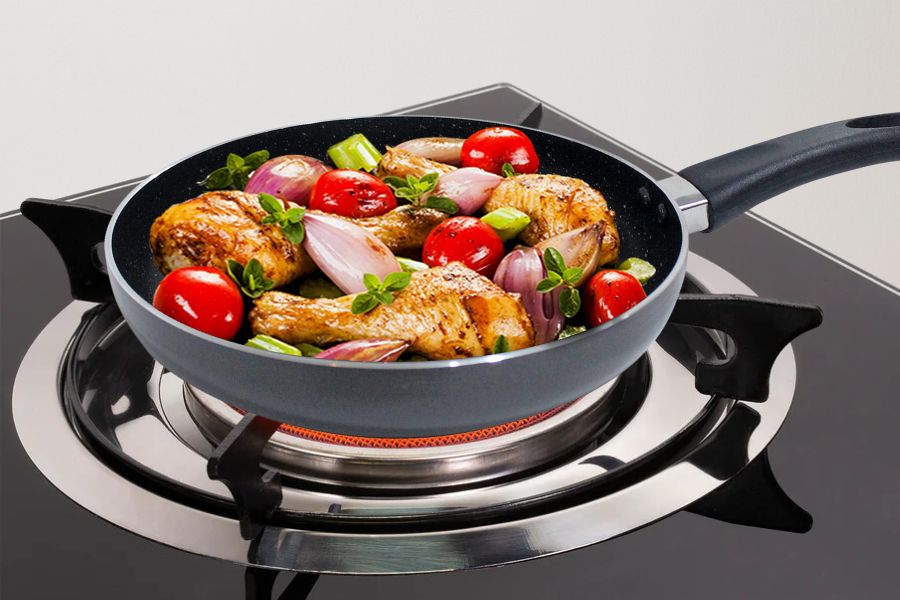
An infrared gas stove offers several benefits over traditional gas stoves, including:
Energy Efficiency and Cost Savings
The use of infrared radiation in infrared gas stoves makes them incredibly energy-efficient. The ceramic plate in the burner emits infrared energy directly into your cookware, bypassing the need for heating the air around it. This results in faster heating and less fuel consumption, translating to noticeable cost savings on your energy bills.
Swift Cooking Experience
For those who value time, an infrared gas stove is a godsend. The direct, radiant heat cooks food at high temperatures in a fraction of the time it takes a traditional gas stove. Whether you’re a busy home cook or a professional chef, this appliance offers a faster route to culinary excellence.
Precision in Every Bite
When it comes to cooking, precision is key, and that’s where infrared gas stoves shine. They offer even heating across the entire cooking surface, eliminating cold spots and ensuring your food is perfectly cooked. This is especially beneficial for tasks like searing and grilling, where precise cooking temperatures are crucial.
A Healthier Way to Cook
Not only do infrared gas stoves cook food quickly, but they also help preserve its nutritional value. The rapid heating locks in flavors and juices, reducing the need for additional fats or oils. This makes for a healthier, tastier meal whenever you fire up the stove.
Types of Infrared Gas Stoves
Infrared gas stoves come in two main types:
Built-in Infrared Gas Stoves
They are designed to be installed directly into your kitchen’s countertop, similar to traditional gas stoves. These stoves are typically larger and more powerful than portable models and can be used for various cooking styles, from searing to simmering.
They also offer a sleek and modern look that can enhance the overall aesthetic of your kitchen.
Portable Infrared Gas Stoves
These stoves are smaller and more lightweight, making them ideal for outdoor cooking or use in smaller kitchens. They can be easily moved around, making them great for camping or other outdoor activities. Portable infrared gas stoves are more affordable than built-in models, although they may not offer the same power or precision as larger models.
When choosing an infrared gas stove, it’s important to consider factors such as power output, cooking surface size, and brand reputation. Some of the most popular brands of infrared gas stoves include Char-Broil, Solaire, and Lynx, among others. Each brand and model will offer different features and benefits, so it’s important to research and compare different options to find the one that best suits your cooking needs and budget.
Other factors to consider when choosing an infrared gas stove include the cooking you plan to do, the size of your kitchen or outdoor space, and any safety features you may need. It’s also a good idea to read reviews from other customers to understand how well each model performs in real-world settings.
Maintenance and Care of Infrared Gas Stoves
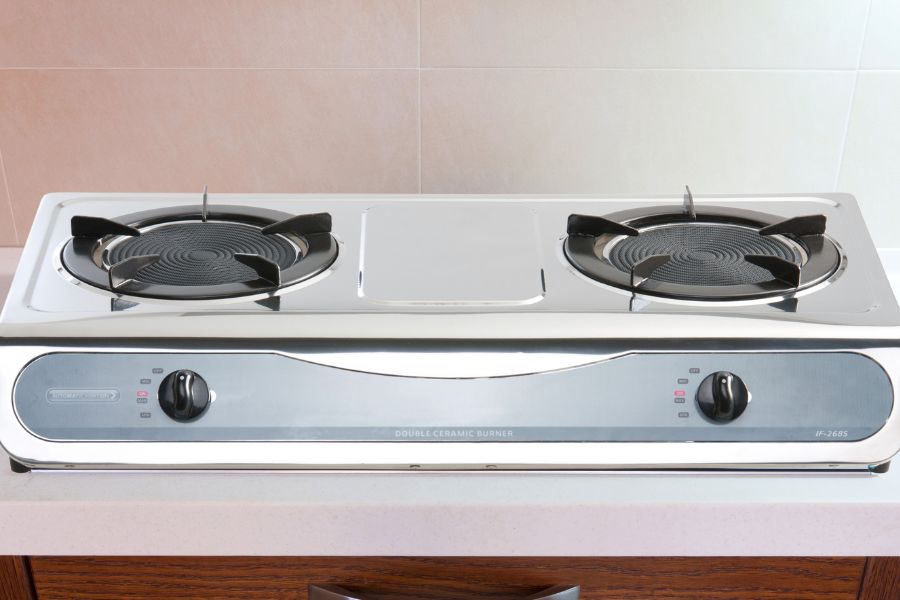
Ensuring your infrared gas stove’s longevity and optimal performance hinges on regular maintenance and care. Here are some guidelines to help you keep your appliance in top condition:
Caring for the Ceramic Plate
The ceramic plate is a critical component in the infrared burner, responsible for emitting infrared radiation that cooks your food.
Regular cleaning is essential to maintain its efficiency. Use a soft cloth or brush to gently remove any food particles or grease buildup, taking care not to damage the plate.
Secure Your Gas Connections
Safety first! Always check to make sure all gas connections are secure and leak-free. If you detect a gas leak or hear a hissing noise, immediately turn off the gas and consult a professional. This ensures that your infrared gas stove remains safe cooking equipment in your kitchen.
Burner Maintenance
Beyond the ceramic plate, the burners also require regular upkeep to function properly. Utilize a soft brush or cloth to clear away any debris or buildup. Gentle cleaning is key to preserving the integrity of the burners.
Also check: Brass Burners vs Cast Iron Burners | Which One Is Better?
Knob Care
The knobs on your infrared gas stove can accumulate grime over time. Regular cleaning with a soft cloth or brush can prevent buildup and potential issues, ensuring precise temperature control during cooking.
Troubleshooting Common Issues
If you encounter problems with your infrared gas stove, such as issues with the ceramic plate, burners, or gas connections, it’s crucial to address them promptly. Solutions may include replacing damaged parts, tightening gas connections, or seeking professional assistance.
By adhering to these maintenance tips, you can extend the lifespan of your infrared gas stove, ensuring it remains an efficient and reliable part of your cooking arsenal for years to come.
Safety Considerations of Infrared Gas Stoves
When using an infrared gas stove, it’s important to take certain safety precautions to prevent accidents or injuries. Here are some tips to keep in mind:
- Keep the stove clean: Regular cleaning can prevent the buildup of food and grease, which can become a fire hazard if it comes in contact with the flames.
- Ensure proper ventilation: Like any gas stove, it’s important to ensure adequate ventilation in the kitchen to prevent the buildup of carbon monoxide or other harmful gases.
- Keep flammable items away: Keep flammable materials such as paper towels or curtains away from the stove to prevent accidental fires.
- Use the stove as intended: Follow the manufacturer’s instructions and avoid using the stove in ways that are not recommended.
- Be cautious when cooking: As with any stove, be careful when cooking and avoid leaving the stove unattended.
Regarding safety, infrared gas stoves offer advantages over traditional gas stoves. For example, because they heat food directly, they tend to be more efficient and produce less waste heat, reducing the risk of accidental burns or fires. Additionally, because they don’t use an open flame, there is less risk of accidental fires or gas leaks. However, as with any appliance, it’s still important to follow proper safety precautions when using an infrared gas stove to prevent accidents or injuries.
Infrared Gas Stoves
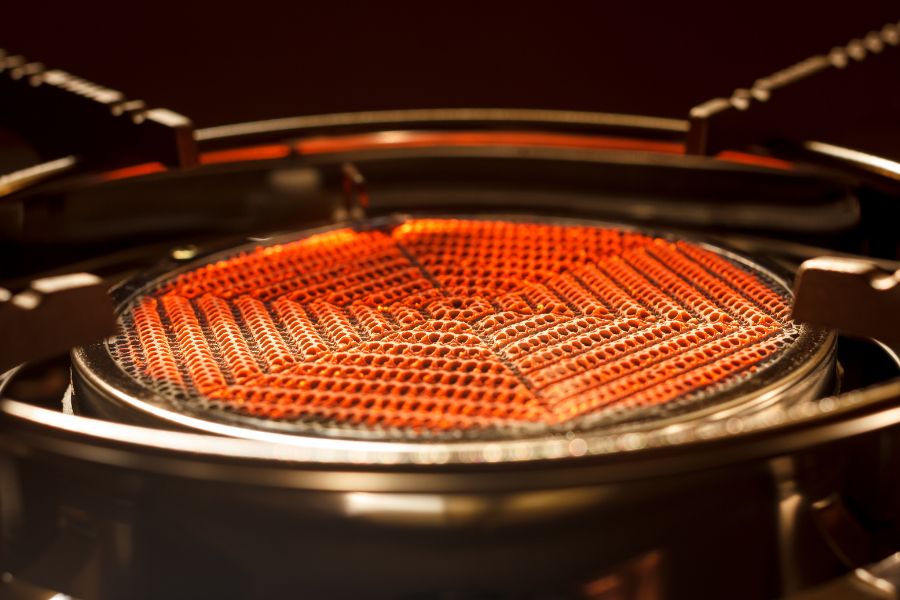
An infrared gas stove is an innovative and efficient cooking appliance that uses infrared radiation to heat food directly rather than heating the surrounding air. This results in faster cooking times, more even and precise heating, and healthier cooking. In addition, infrared gas stoves can be more energy-efficient than traditional ones, resulting in cost savings over time.
However, as with any appliance, it is important to take proper care and maintenance to ensure that an infrared gas stove works properly and lasts many years. Additionally, taking certain safety precautions to prevent accidents or injuries when using an infrared gas stove is important.
If you are in the market for an infrared gas stove, consider the type of stove you want, whether it’s built-in or portable, and the features and functions that are important to you. Consider the brand and model, as well as cost and energy efficiency factors, before deciding.
An infrared gas stove is a great choice for anyone looking for an efficient and effective way to cook food. It can provide years of reliable and satisfying cooking experiences by taking proper care and following safety precautions.
FAQs
How Do the Burners in an Infrared Gas Stove Differ From Traditional Gas Stove Burners?
Traditional gas stove burners rely on combustion to produce an open flame, heating your cookware. In contrast, infrared gas stove burners use a ceramic plate to emit infrared radiation directly onto the cookware, providing more efficient and even heating.
Can I Replace My Traditional Gas Stove With an Infrared Model Without Changing My Cooktop?
Generally, infrared gas stoves are designed to fit standard cooktop dimensions. However, it’s essential to check the specifications provided by appliance manufacturers to ensure compatibility with your existing cooktop.
How Does the Ignition Process Work in an Infrared Gas Stove?
The ignition process in an infrared gas stove is similar to traditional stoves and ovens. Most modern models come with electronic ignition systems that are both safe and efficient, eliminating the need for manual lighting.
How Do Infrared Gas Stoves Compare to Induction Cooktops in Terms of Efficiency?
Both infrared gas stoves and induction cooktops are known for their efficiency. However, infrared stoves use infrared radiation to heat cookware directly, while induction cooktops use electromagnetic fields to heat the cookware. Your choice between the two may depend on your specific cooking needs and the types of cookware you own.
Are There Specific Appliance Manufacturers That Specialize in Infrared Gas Stoves?
Several reputable appliance manufacturers, including brands like Char-Broil, Solaire, and Lynx, specialize in infrared gas stoves. Researching and comparing different models is advisable to find one that suits your cooking needs and budget.

